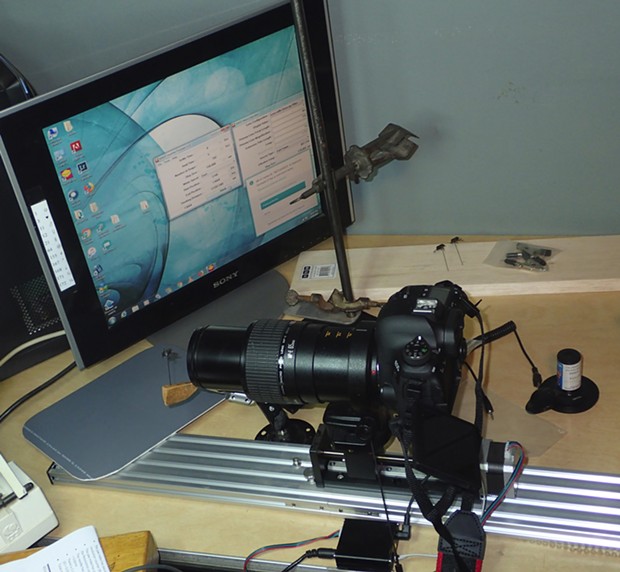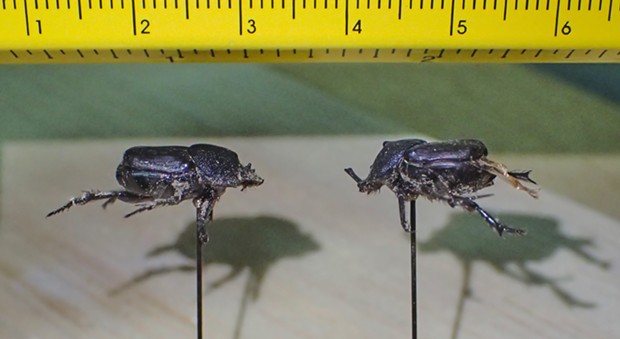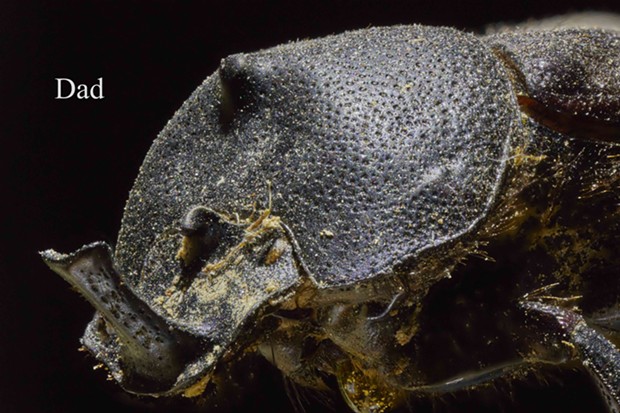HumBug Online
HumBug: Macro Mania

- Photo by Anthony Westkamper
- The setup. Canon 6D mk II, MPE 65 1-5X lens, mounted on StackRail controlled by an old spare Windows 7 computer.
From time to time, someone asks how I got this or that shot and what gear I used. Like most technical people, I suffer from gadgetitis, and have an array of cameras and accessories for various tasks.
The more or less formal dividing line for “true macro” is a 1:1 magnification, meaning that a 1-centimeter object will project to a 1-centimeter portion of the image receptor.
After a lot of research prior to buying my first interchangeable lens camera and knowing I'd be shooting mostly insects, I chose Canon because it was the only company with its MPE 65 mm 1-5X lens. It can't be used for anything else. It can take a photo of an individual eyelash but the end of your nose would fill the entire frame. No family portraits unless they're really small.

- Photo by Anthony Westkamper
- Life size image of the beetles. They're both a little more than 1 centimeter long.

- Photo by Anthony Westkamper
- Female dung beetle very close up. Yep, she's got a little on her face. About 1:3.5 magnification.

- Photo by Anthony Westkamper
- Male dung beetle showing his impressive horn. About 1:3.5 magnification.
Comments